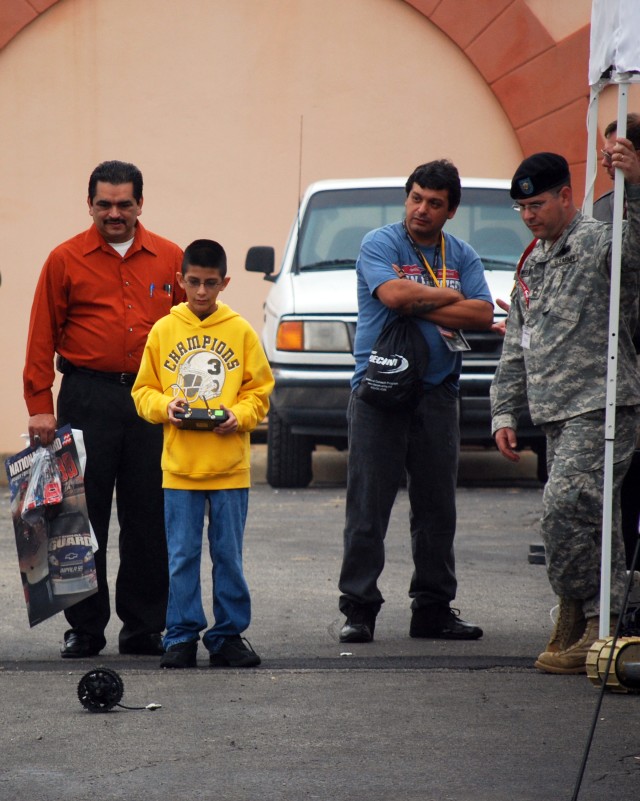The future of collegiate football met the future of Army technology at the ninth-annual U.S. Army All-American Bowl in San Antonio, Texas.
Ninety-eight of the nation's best high school football players and 97 of the nation's best high school band musicians as well as 32,000 family and fans visited displays from the Army's science and technology organizations as part the Army's sponsorship of the nation's premier high school all star football game.
Robotics, communications electronics, sensors, simulators and the latest battlefield cuisine brought the message of strength through technology to a New Year's weekend event best know for its focus on the physical characteristics of strength. High technology exhibits from the U.S. Army's Research Development and Engineering Command took center stage for the thousands who came through the Army Strong Zone, the display-filled parking lot of the Alamo Bowl football stadium.
Robotics demonstrations and a robotics obstacle course captivated the crowd, both young and old.
"I didn't think we had anything like this in real life," said Michaele Stallings, a high school cheerleader from Comfort, Texas. The Army Research Laboratory from Adelphi, Md., teamed with the Tank Automotive Research, Development and Engineering Center, from Detroit, Mich., to highlight research the Army is pursuing in robotics technology and autonomous behaviors for small, unmanned ground vehicles.
"It's just kind of like playing a video game," Stallings explained after guiding the robots around the parking lot area and through the obstacle course. In fact, the hand-held controller for the most advanced robotics was designed specifically to mirror the most commonly used computer gaming controllers, explained Jeremy Gray of TARDEC.
But, the goal of this technology is no game according to ARL's Master Sgt. Ralph Brewer.
"This research enhances the situational awareness of Soldiers and provides a stand-off capability that keeps them out of harm's way during dangerous missions," he said.
Another technology that attracted thousands was the sense through the wall handheld radar imager. These sensors weigh less than six pounds yet have the capability to display the range and direction of targets inside a building from as far as 20 meters away.
"This device provides situational awareness information to the Soldier to assist in gaining footholds in buildings and for room clearing operations," said Wilbur Chin of the Communications-Electronics Research Development and Engineering Center, Fort Monmouth, N.J.
Teenaged brothers Henry and Marsalis Mahome of San Antonio came simply to watch the football game, but found the opportunity to learn about advanced Army technology and see through walls a welcome surprise.
"I had no idea that the Army had this cool stuff; it's like out of a movie," Henry said.
Ms. Dora Ramirez from La Costa Elementary School in San Antonio added that the Army's technology demonstration could help "plant the seeds of science" in students.
The demands of the game limited the time football players could spend in the Army Strong Zone. . During a break, however, dozens headed directly to the Mobilized Kitchen Trailer where samples of combat rations met hungry appetites.
"Our rations are Warfighter tested and approved. Now, they're all-star tested and approved," said Jeremy Whitsitt from the Natick Soldier Research Development and Engineering Command, Natick Mass.
While the All-American Bowl and the Army Strong Zone had a heavy focus on youth and the future, there were some old timers around. James Bethany, a 1st Infantry Division Viet Nam War veteran from 1968-1970, compared what he had to the sensor equipment available today,
"We didn't have technology. I'm glad the equipment for Soldiers to see and observe safely is here...all I had back then was binoculars."




Social Sharing